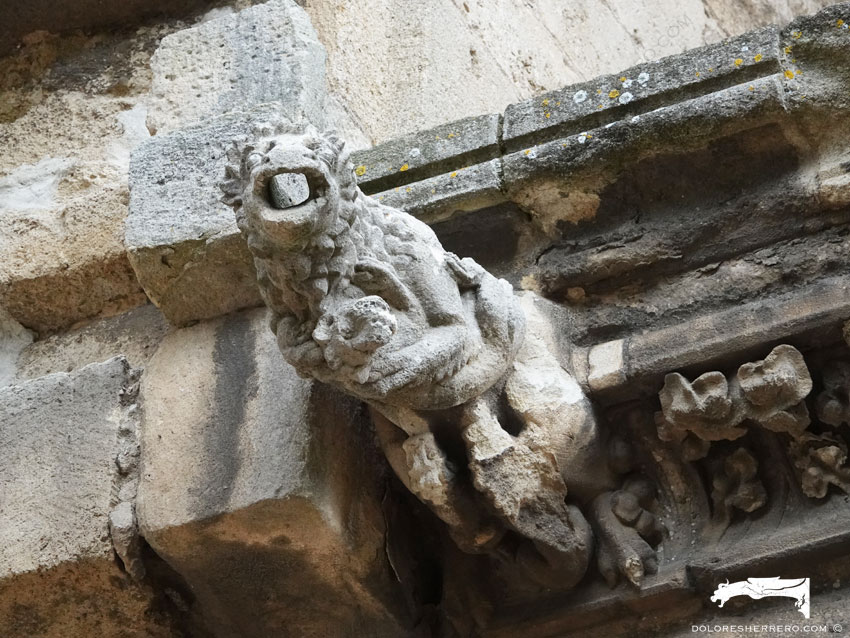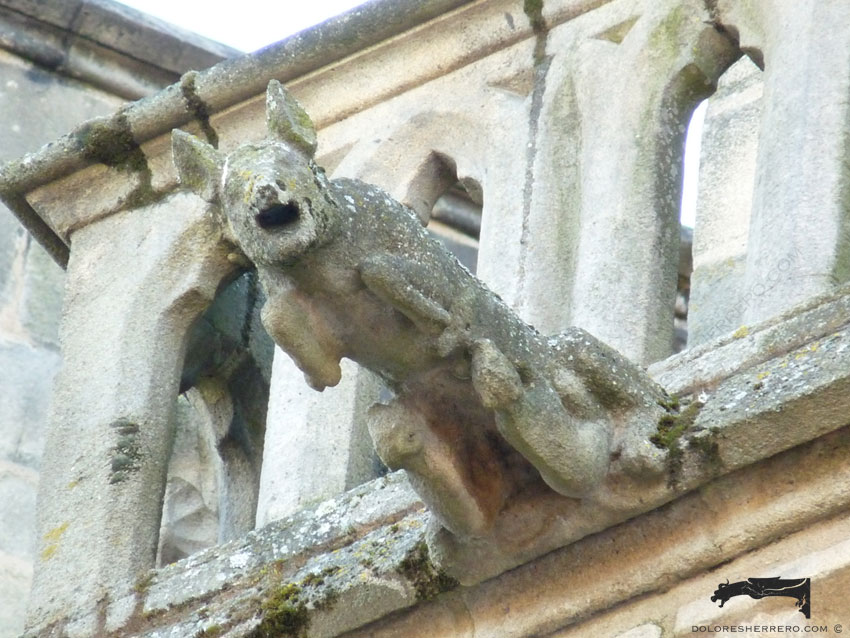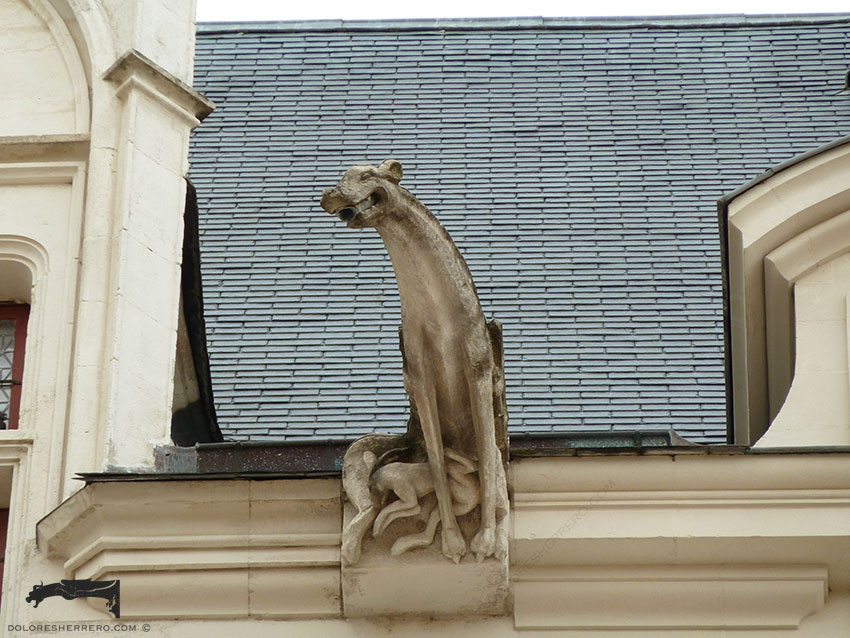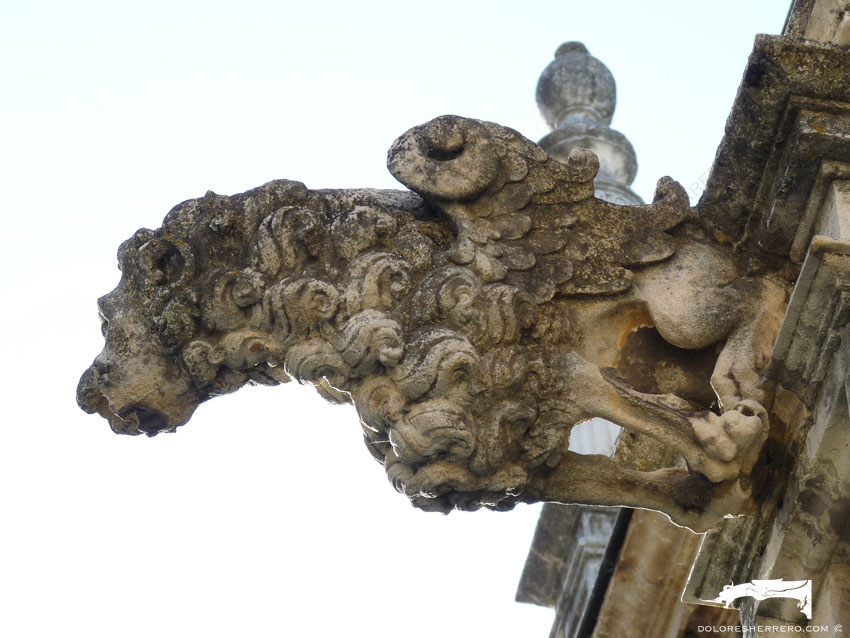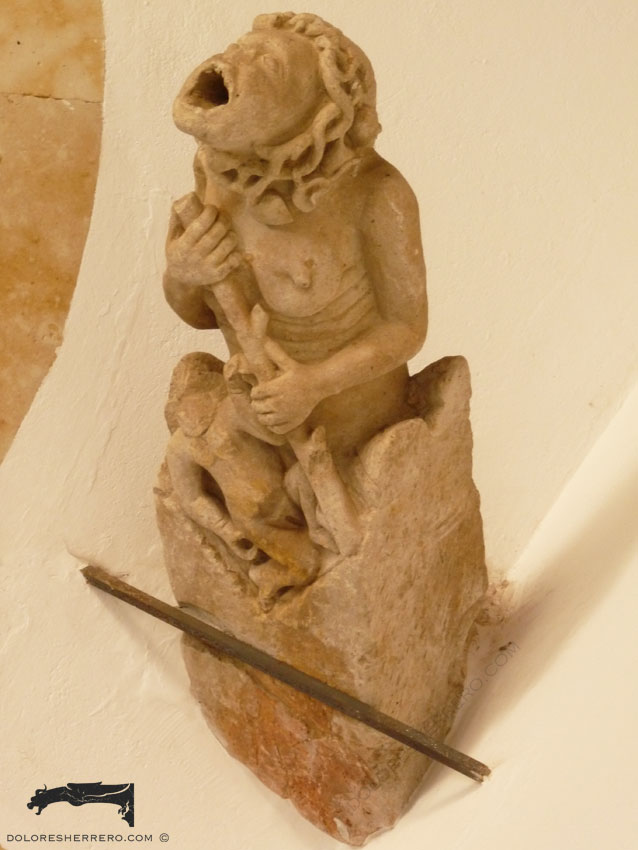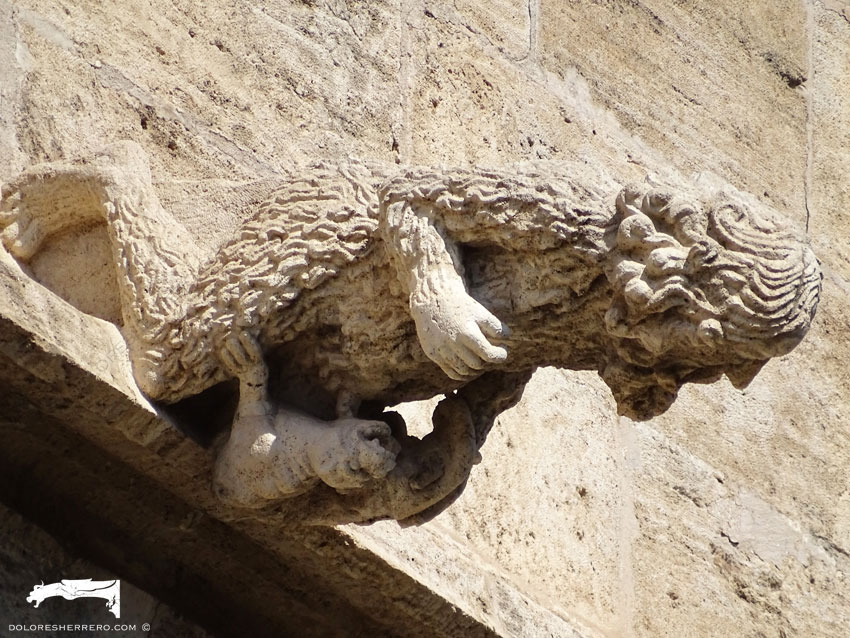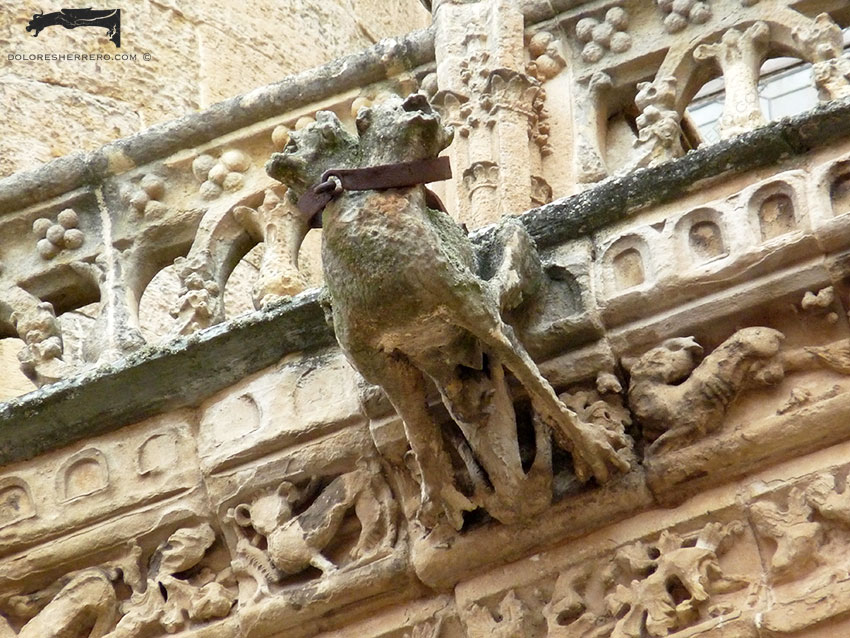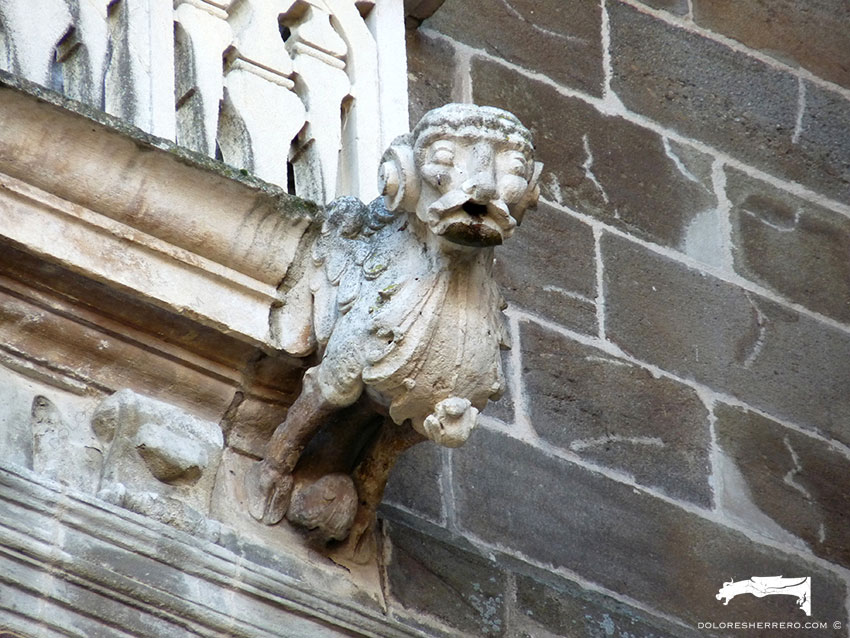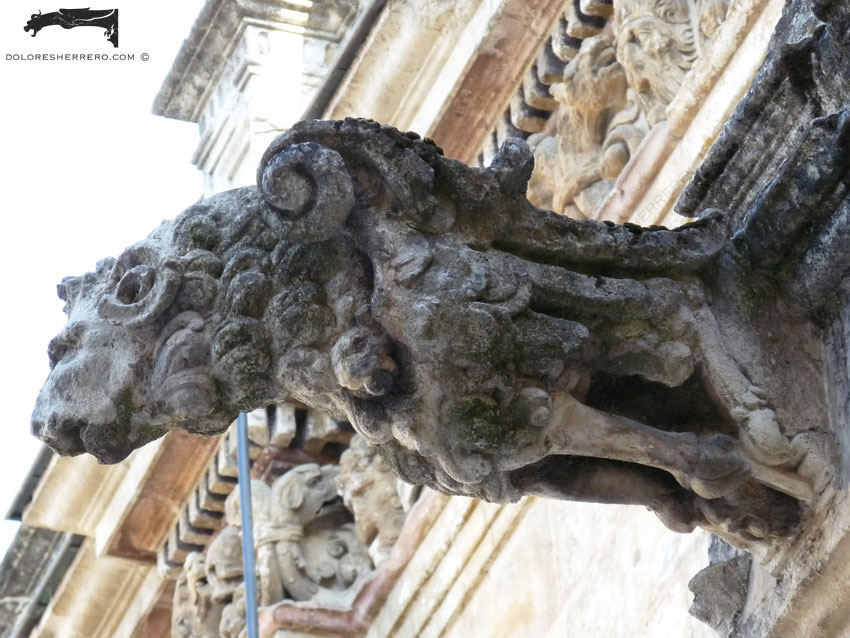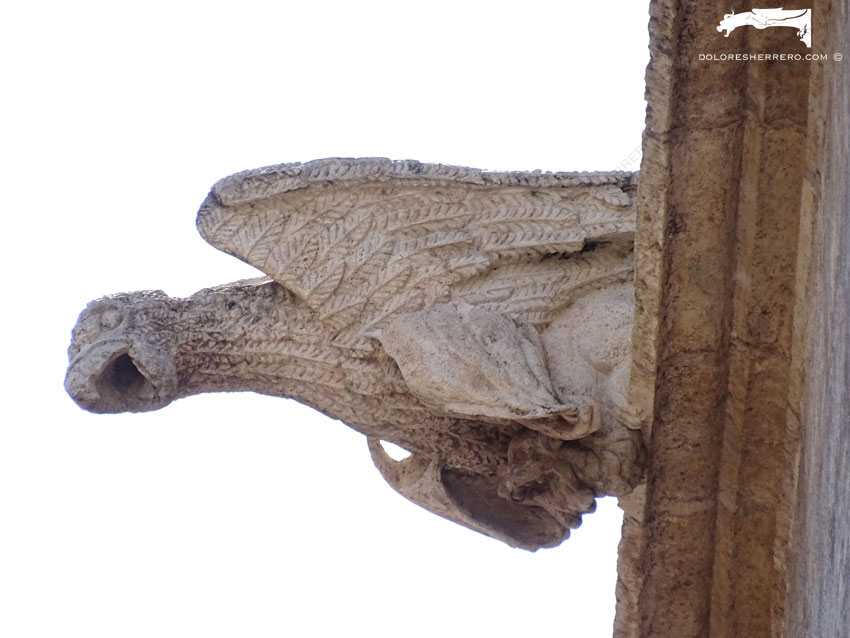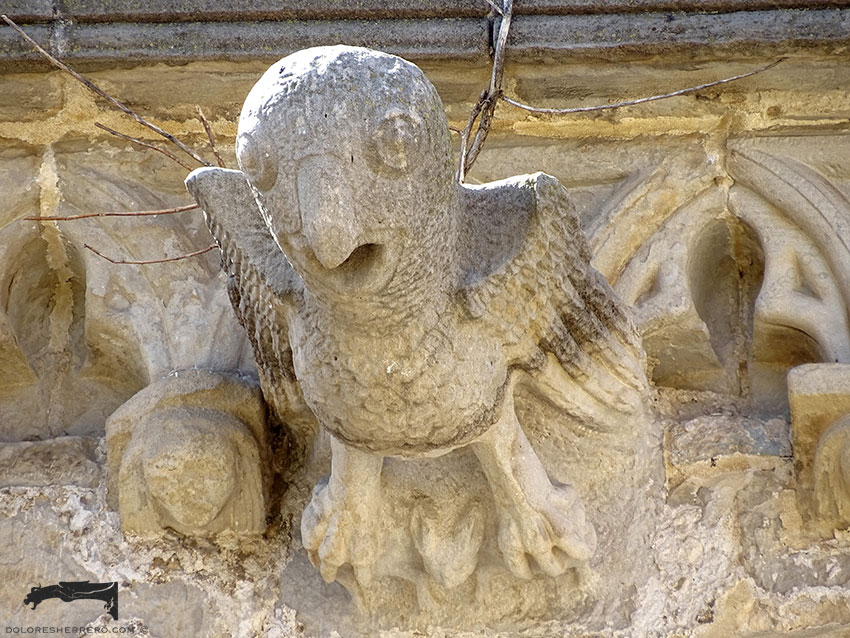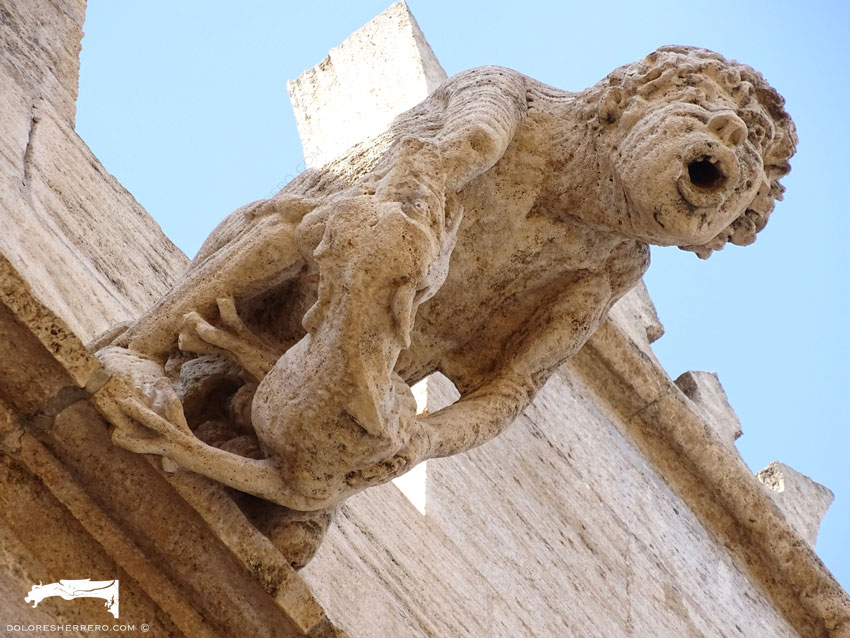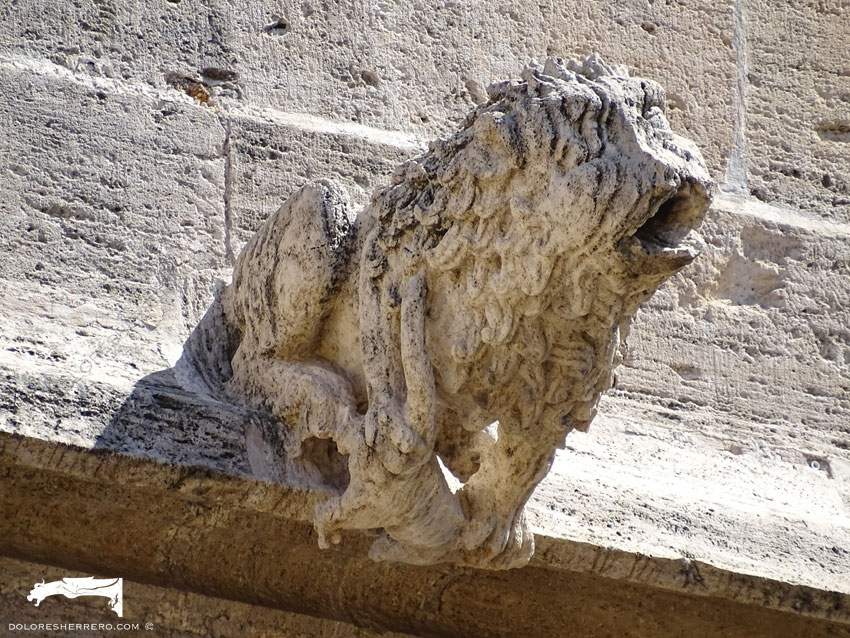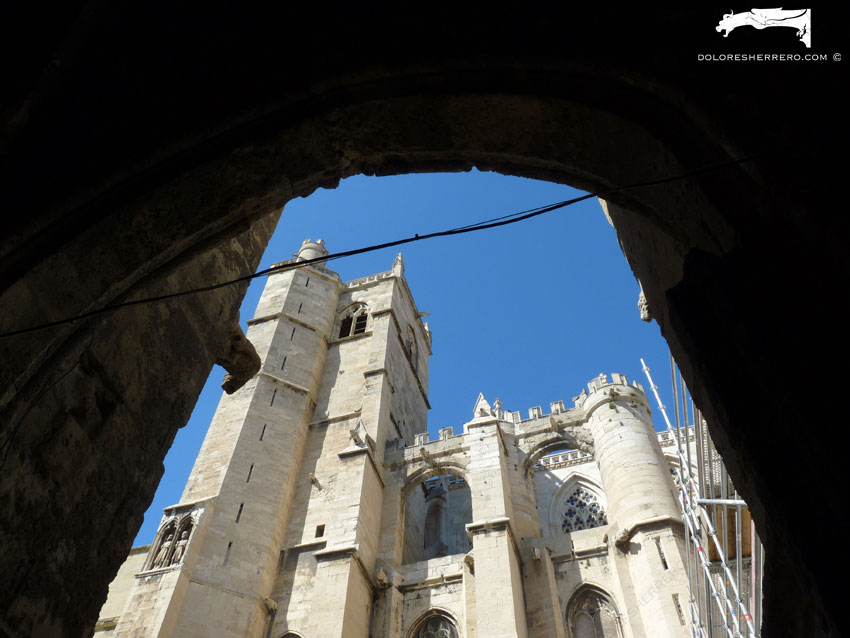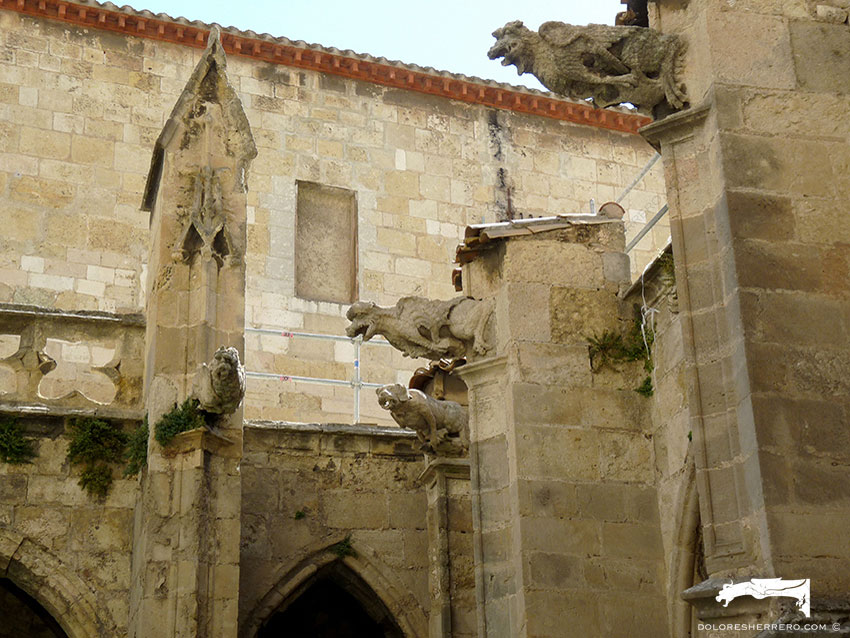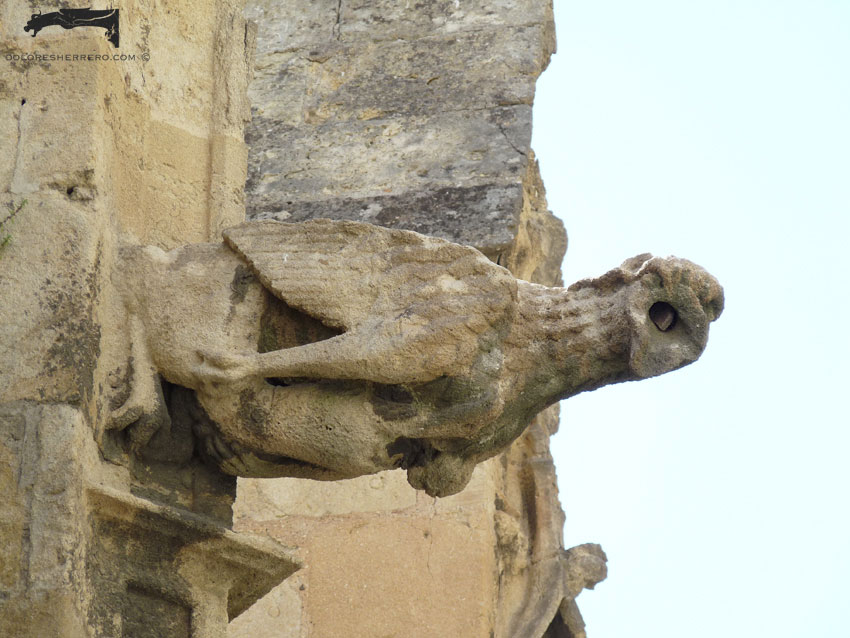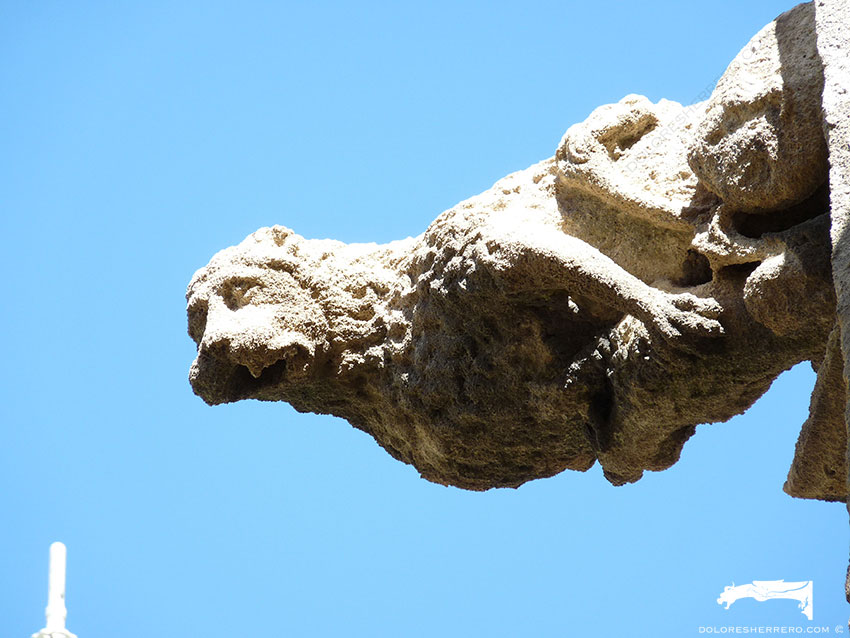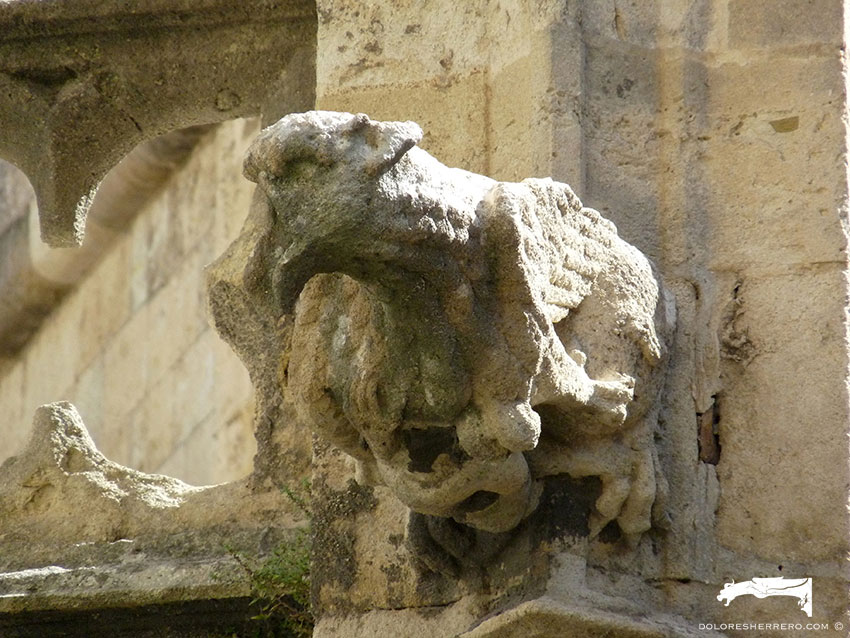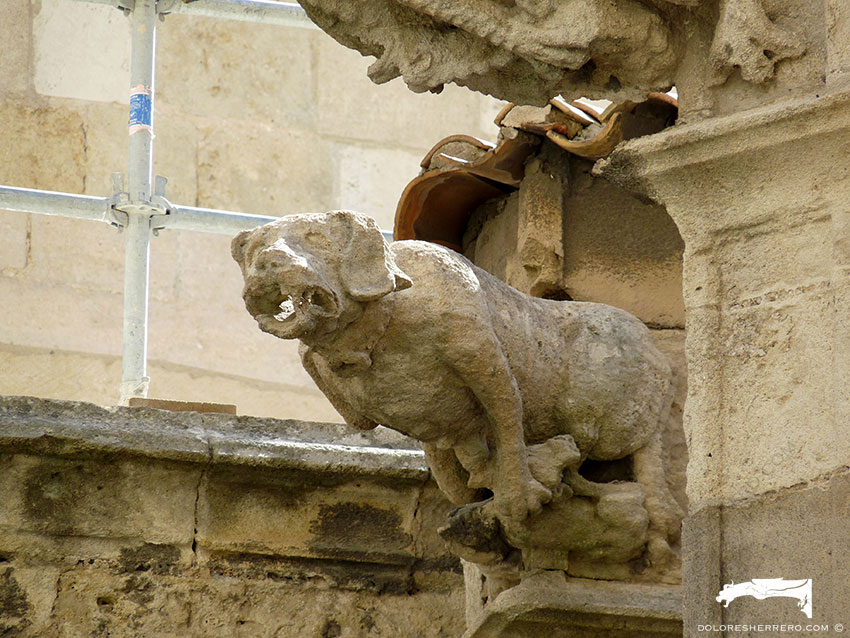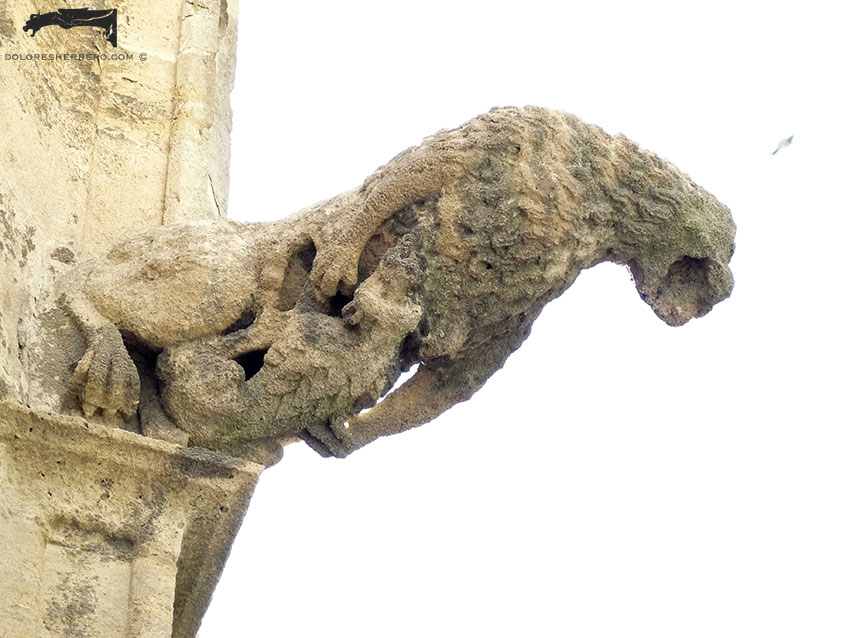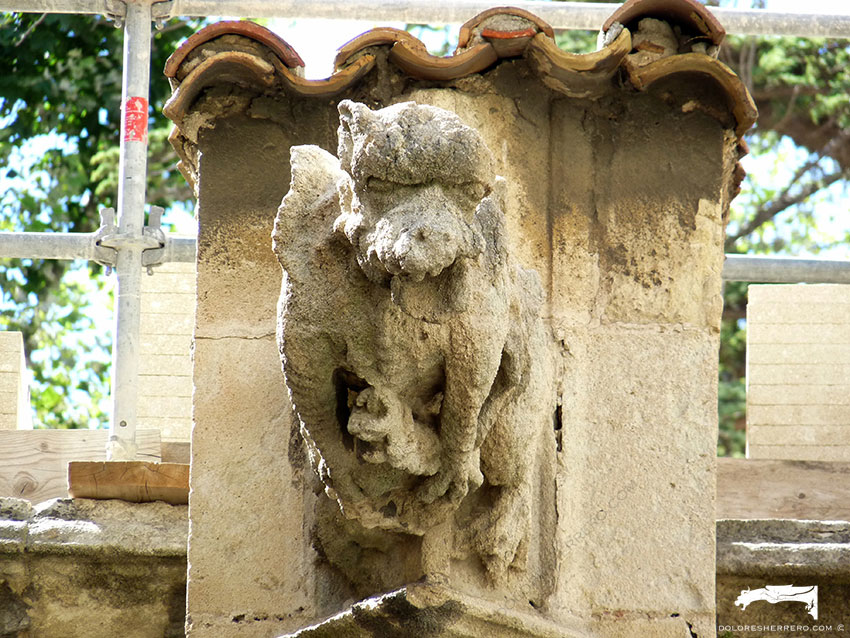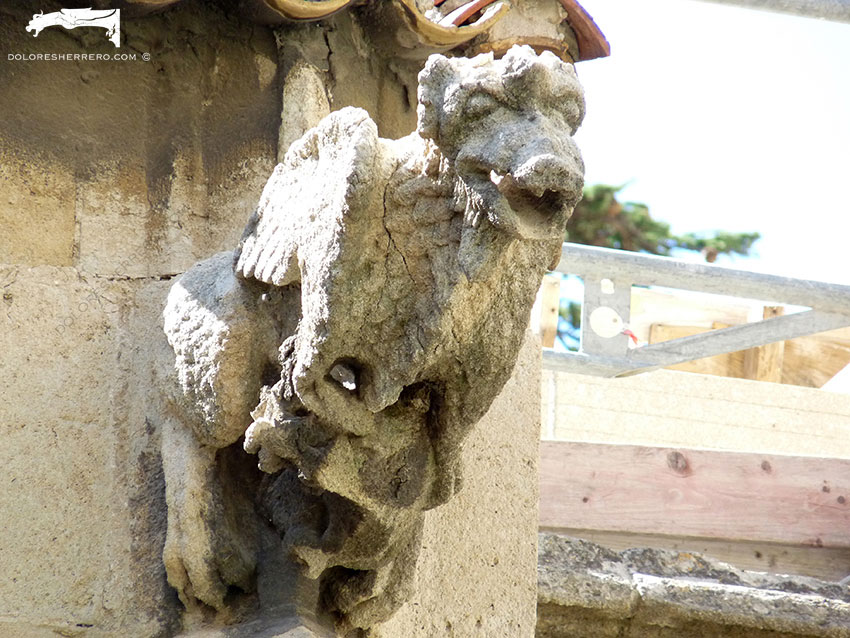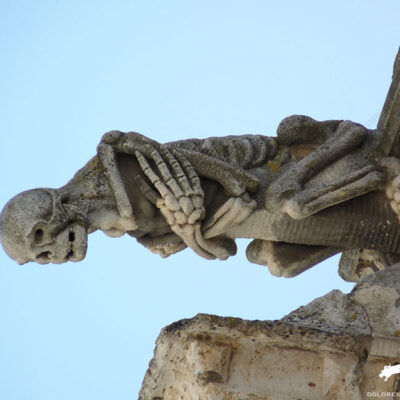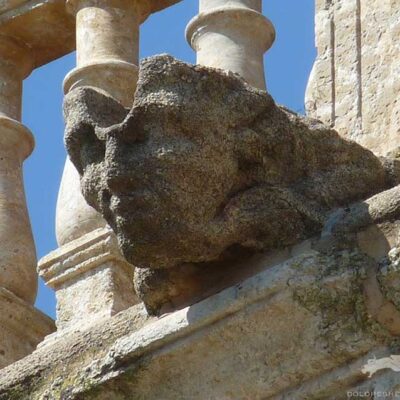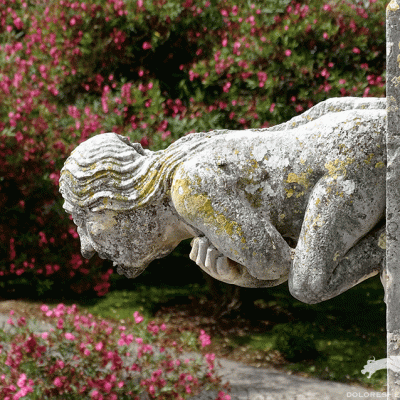On many buildings you often see gargoyles accompanied by small creatures. Today we’re going to discuss these little creatures and I’ll show you a fantastic example of this type in the lovely French city of Narbonne.
Gargoyles often include small beings placed underneath the main figure and in different positions: suckling, being trodden on, grasped, mocking, playful, and so on. They are generally dynamic little figures that are added to gargoyles to give them a narrative touch.
Some gargoyles are animals or monsters depicted with their offspring, sometimes in the act of feeding them.
- Archive of the Crown of Aragon (Barcelona, Spain)
- Béziers Cathedral (France)
- Limoges Cathedral (France)
- Church of Our Lady in Trier (Germany)
- Castle of the Dukes of Brittany in Nantes (France)
- Limoges Cathedral (France)
However, when they are figures with a more demonic connotation, these small companions have a clearly diabolic meaning; sometimes they could also be considered offspring of demons. Generally speaking, they have negative, evil connotations, both for their gestures and attitudes and for the positions they occupy, as they are usually placed on the lowest and basest parts of the gargoyle’s body. In his research on the gastrocephalus, Burbank Bridaham says that head in the belly can convey the idea that the centre of the brain has descended to the lower parts of the body, giving these figures a negative connotation. This placement in the lower part of the body and its meaning can also be linked to the meaning of these small evil creatures.
- Grotesque. Jerónimos Monastery in Lisbon (Portugal)
- León Cathedral (Spain)
- Valencia Lonja (Spain)
- Provincial Museum of Salamanca (Spain)
- Narbonne Cathedral (France)
- Valencia Lonja (Spain)
- Salamanca Cathedral (Spain)
- Astorga Cathedral (Spain)
- León Cathedral (Spain)
- Valencia Lonja (Spain)
Other times, we see gargoyles with a religious meaning, where figures representing good are seen crushing small demons that represent evil (the struggle between good and evil), or vice versa, although this is less common.
- Valencia Lonja (Spain)
- Church of Santa María la Mayor in Valderrobres (Teruel, Spain)
- Valencia Lonja (Spain)
- Limoges Cathedral (France)
- Salamanca Cathedral (Spain)
- Valencia Lonja (Spain)
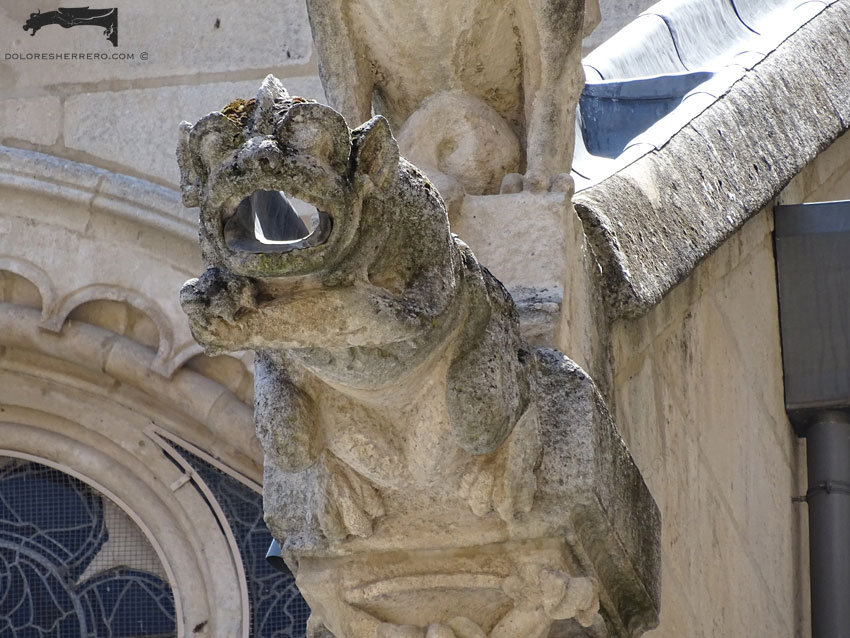
Burgos Cathedral (Spain)
As we mentioned at the beginning, we want to highlight a remarkable set of gargoyles that we discovered on a trip to Narbonne (France), specifically those in the cloister of the Gothic cathedral of St. Just and St. Pasteur, all of which are sensational gargoyles.
The Cloister of Narbonne Cathedral
- Catedral de Narbonne (Francia)
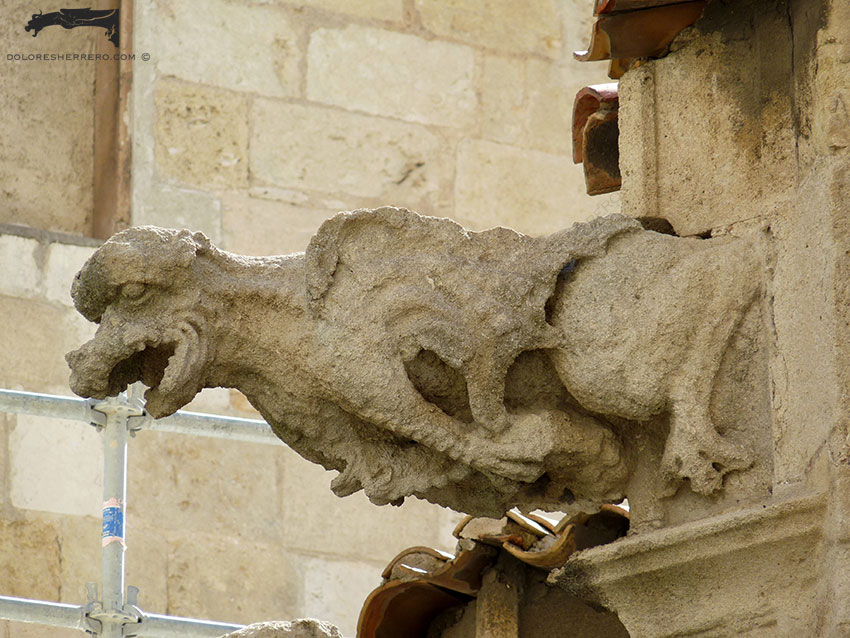
Bibliography consulted
BURBANK BRIDAHAM, L., The Gargoyle Book. 572 examples from Gothic Architecture, New York, Dover Publications, Inc., 2006.

Doctor of Art History and researcher specializing in the study of gargoyles.
I am Dolores Herrero Ferrio, and my thesis, “An Approach to the Study of Gargoyles of Gothic Cathedrals in Castilla and León”, is dedicated to the study of these fascinating figures.
If you like gargoyles and art history, you will also enjoy my book, “The Gargoyle and Its Iconography,” a book I have written with great care for those interested in the world of gargoyles.
I have created my own Encyclopedia of Gargoyles, a Gargopedia to share with you, where you will discover all the secrets and wonders of these enigmatic sculptures.
I hope you enjoy this Gargopedia as much as I have enjoyed creating it, and remember that each gargoyle has a story to tell, and here you will discover them all.

